– Chrysler’s Styling Studio created a milestone car for the ’70 model year
– New fastback design provided an all-new look for Valiant line
– The Duster 340 geared for the “Youth Market” and was a sales hit
NEW FOR 1970
Gearing up for the 1970 model year, Chrysler Corporation’s Plymouth Division had its Styling Studio dream up something new for the marketplace that would be both exciting and done on a tight budget, which was $15 million, at the time not much in the world of automobile manufacturing. The Valiant line had been successful in the compact car segment, however it lacked in the “sporty” category and management wanted to add something that could gain new customers at their Plymouth dealerships.
All the while, another part of the Styling Studio was already busy at work on a new product for 1970 as well, a brand-new “E-body” Barracuda to go after the pony car market. The management at Plymouth felt that a new car, placed in-between the boxy-shaped Valiant and the new, wider Barracuda would be in order.
The team of Gene Weiss, Neil Walling and Milt Antonick went to work on that new body style, and with the limited budget, it would have to be based on the standard 108-inch wheelbase of the Valiant platform. However, it was to look like something completely new, and not simply a warmed-over Valiant. The new car, to be called “Duster”, would retain the existing Valiant front clip (fenders, hood, front bumper and the 1970 grille design) but be completely re-styled as a “sporty compact.”
ALL-NEW SEMI-FASTBACK ROOFLINE
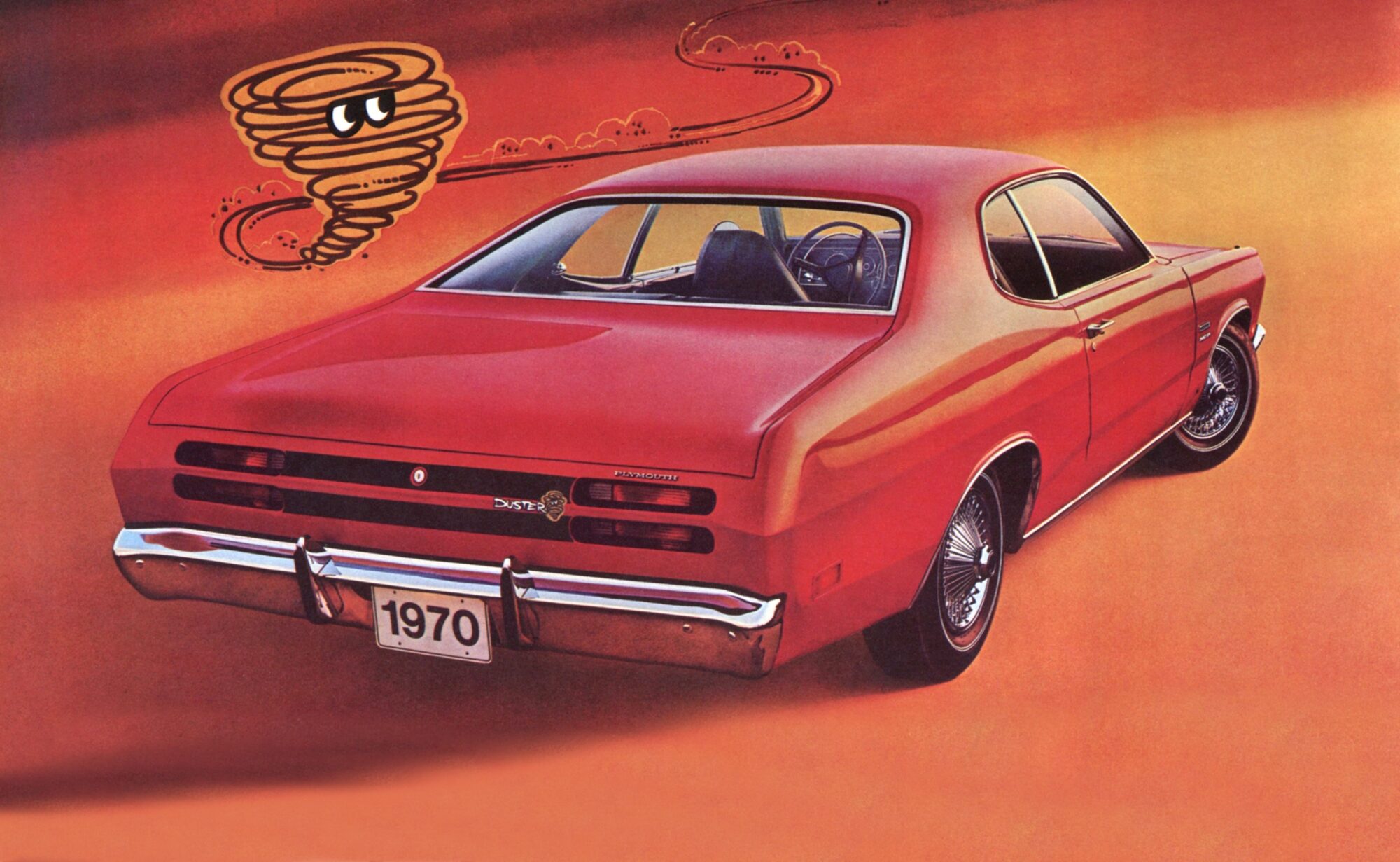
Inside the studio walls, an all-out effort was put into developing a full-size clay mockup and it included a semi-fastback roof design, with a graceful look where the C-pillar had a smooth integration into the quarter panels. Also featured was flush-mount rear glass (backlight) that dropped into a large, wide decklid. The door glass is like that of a hardtop, with no window frames. The stylists picked-up on the body lines on the new quarter panels, adding character lines extending to the full length of the car, with a kick-up over the rear wheel openings. The metal creases extended to match those of the Valiant’s front fenders and door skins.
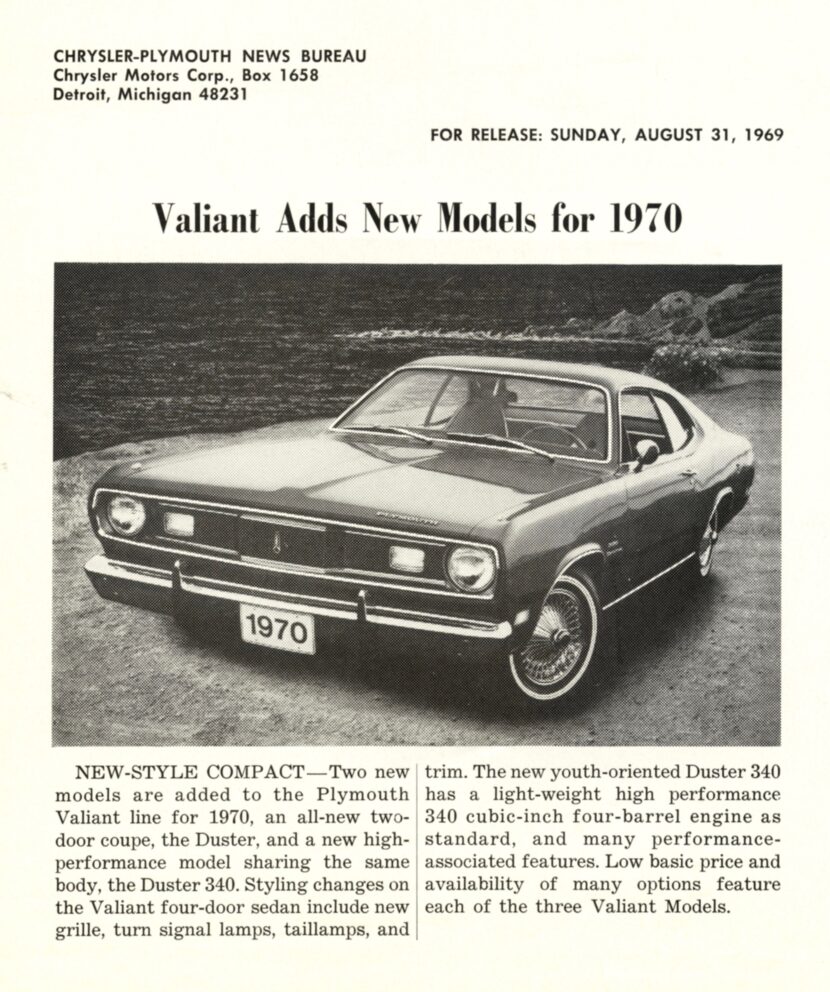
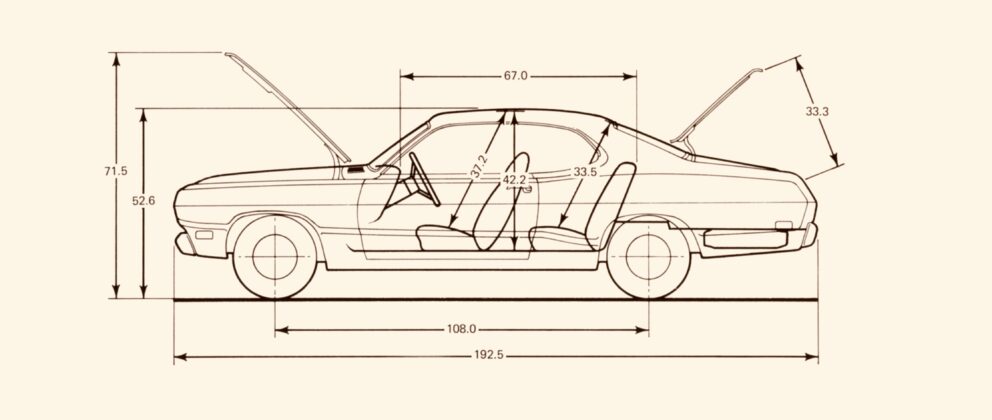
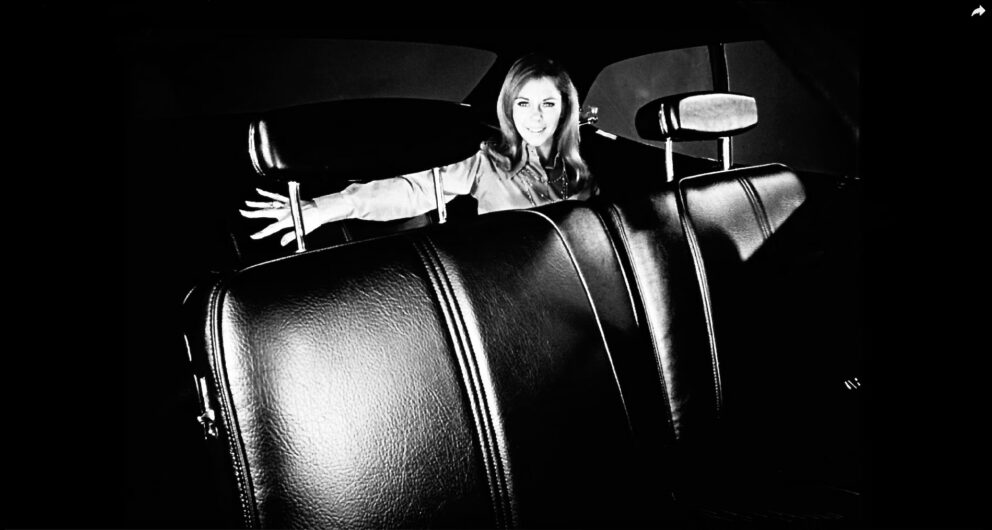
As a result of the fresh roof design and its blending into the side sheetmetal, there came a need for some innovative design work from the automotive glass industry, from PPG (Pittsburgh Plate Glass Company) as well as Chrysler engineers in order to design window track mechanisms for inside the doors. Because of the sharply curved side glass (at a 45-inch radius, as compared to the industry’s previous 90-inch maximum radius). The curves of the glass and the narrower roof completely revised the appearance from the Valiant line.
The shape of the new Duster gave a look of something completely different from anything that Plymouth had ever offered in the past, especially when viewed from the side and rear. The curvy shape above the beltline on the quarter panels definitely provided a dramatically new, fresh and sporty flavor. In keeping with the theme of giving the car a modernized appearance, the side glass was now ventless, eliminating vent windows. To keep production costs down, the side quarter windows had swing-out glass for open ventilation and the windshield was laid back more than the Valiant.
The Duster’s rear valance layout featured vertical taillight slots that featured no bezels, providing a clean, uncluttered appearance. If there was one minor flaw in the overall design of the Duster, it would be that with it featuring slightly bulged-out quarter panels, it created a visual that saw the wheels positioned in-bound by about two inches. The reason was that the lack of further budget didn’t allow for the incorporation of a wider rear axle assembly as they were limited to the unit sourced from the Valiant. The front track of the Duster measured 57.4 inches, with the rear at 55.6 inches.
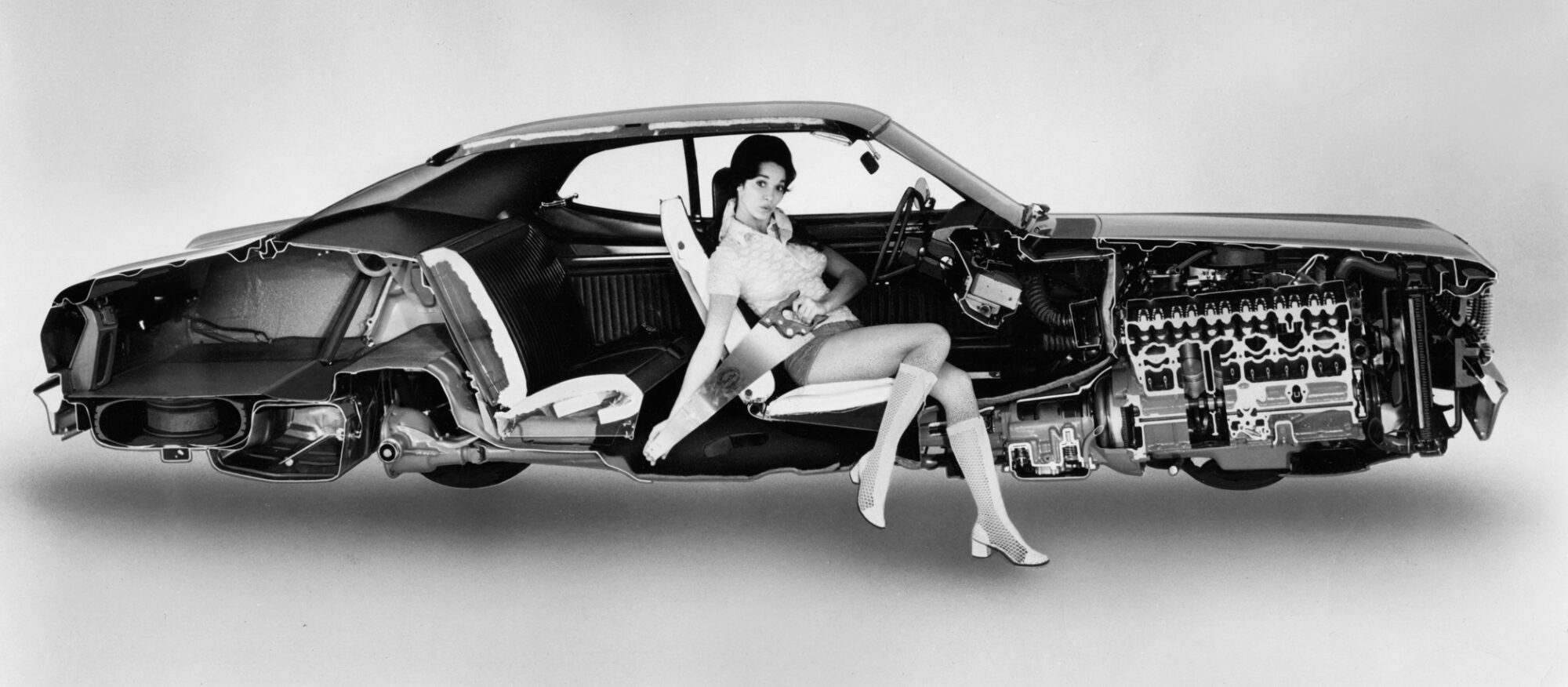
Standard Dusters had a wide variety of powerplants available: 198-cid and 225-cid “Slant Six” engines, and a 318-cid V8 that had two-barrel carburetion, delivering 230 horsepower. The standard transmission was a 3-speed fully synchronized manual, with available automatic (3-speed TorqueFlite®). All used regular gasoline. The interior was traditional Valiant, however it would have a much more racy appearance when the optional bucket seats, center console and “Tuff” three-spoke steering wheel was ordered.
LEGENDARY 340-CID SMALL BLOCK
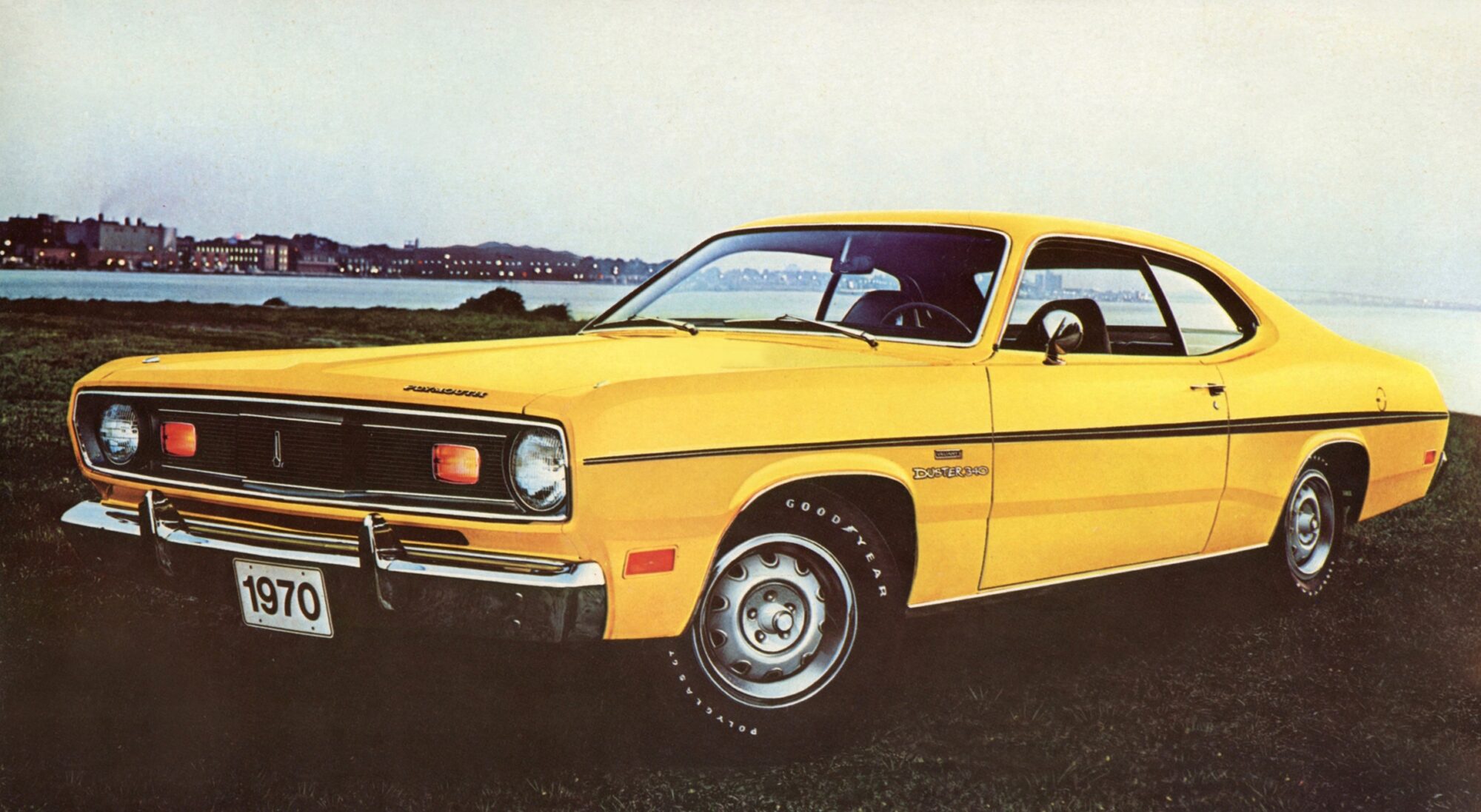
A “youth-oriented” Duster 340 was marketed for the performance crowd, featuring a 4.040-inch bore, 3.310-inch stroke, 10.5:1 compression, high-flow cylinder heads (2.02-inch intake valves, 1.60-inch exhaust valves), forged crankshaft, high-performance camshaft, double-row roller timing set, windage tray, 4-bbl Carter AVS carburetor (with 1.44-inch primaries, 1.69-inch secondaries), high-flow dual-plane intake manifold, 2 1/4-inch dual exhaust, 8 3/4-inch rear end and horsepower rating of 275 at 5,000 rpm. These engines came factory-painted HEMI® Orange. A 4-speed manual transmission with Hurst shifter was available as optional equipment, Pistol Grip handle available.
The Duster 340s had front disc brakes, heavy-duty suspension (.87 diameter torsion bars, 6-leaf leaf springs in the rear), .88-inch front sway bar, E-70 x 14-inch Goodyear Polyglas rubber, 5.5-inch steel Rallye wheels, Rallye instrument cluster, including a tachometer. In addition, a flat-black grille came standard and side stripes and rear black vertical stripes were optional. The high-revving car was described in factory promotional materials as being “the first super low-price supercar.” (The term muscle car had not been coined as of yet in these early years.)
When the Duster 340 was first released, Super Stock & Drag Illustrated Magazine got their hands on one, which was equipped with a 4-speed and 3.91:1 rear gearing. On a cold dragstrip with headwinds, they scored a best run of 14.09 seconds down the drag strip and at 99.77 mph. It had a shipping weight of 3,475 pounds and a sticker price of $3,455.00. It was a quick, affordable performance car.
Production was set up for the Duster at four different Chrysler assembly plants: Hamtramck (Michigan), Commerce (California), Fenton (Missouri) and Windsor, Ontario (Canada). The Duster logo had become one of the automobile industry’s most recognizable markings. At mid-year, a “Gold Duster” premium edition became available, featuring gold striping on the sides and rear, and full wheel covers, whitewall tires, pleated vinyl seats, the interior had special trim, with color-keyed carpeting, bright drip moldings and an argent painted grille. A special feature of the Gold Duster was a vinyl canopy top (with gold-hued reptile grain), and the package became a popular option. As it turned out, the gamble to create the Duster was a big winner, as by the end of the 1970 model year run, a total of 217,192 units sold, making it the division’s best-selling model by a wide margin.
1971 MODEL YEAR
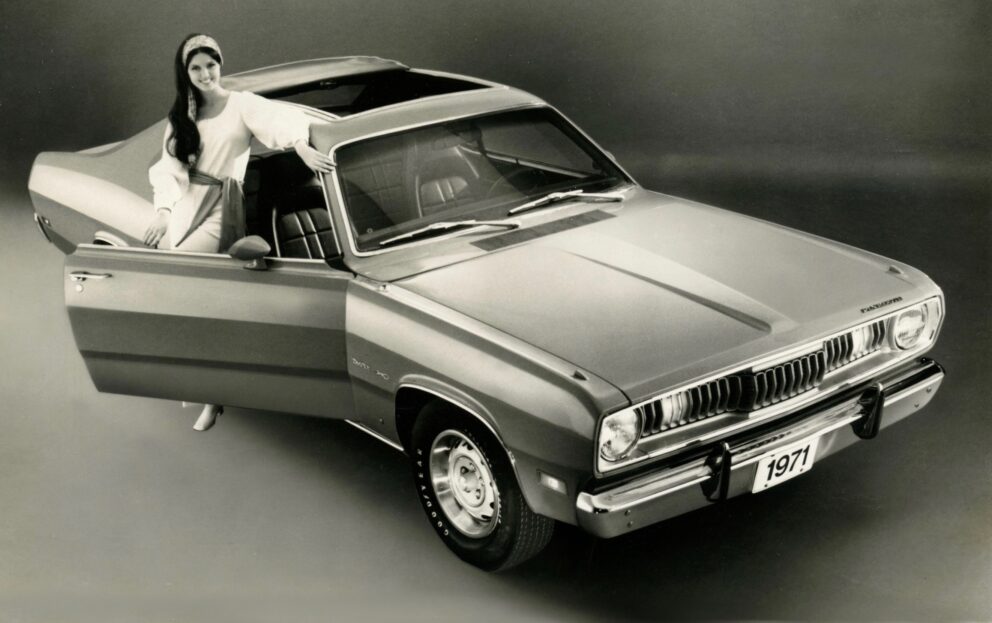
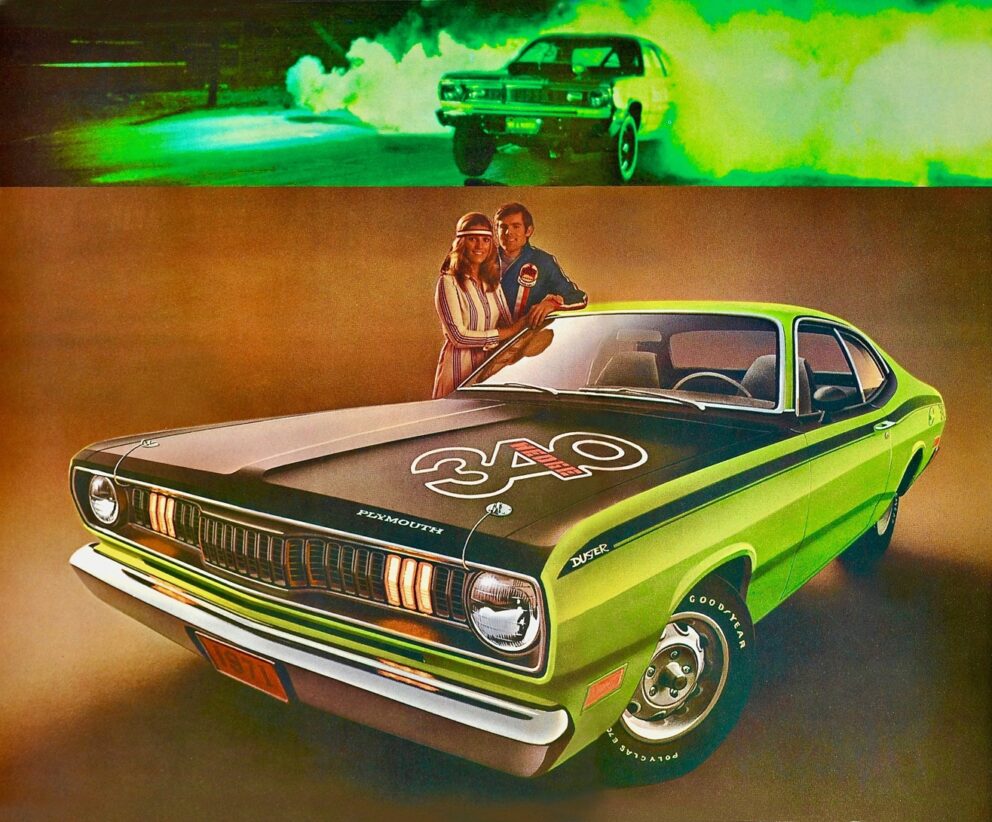
1971 saw minimal changes to the Duster, mainly horsepower reduction as a result of government-mandated emission control standards. The 1971 Dusters looked the same as the ’70s, with the exception of a new, flashier “Sharktooth” grille standard on the 340 cars. Duster 340 versions also were changed under the hood, a new “Thermo-Quad” Carter carburetor (that featured 1.38-inch primaries, 2.25-inch secondaries) was added. 340 cars were also upgraded late in the 1971 model year with a new breakerless electronic ignition system. Mid-year saw a small change on the deck lid, a raised center added (for strength) as there were complains from buyers regarding denting on the deck lid from pressing down while closing. There was a “Duster Twister” model also offered this model year, basically “all show” and “no go.”
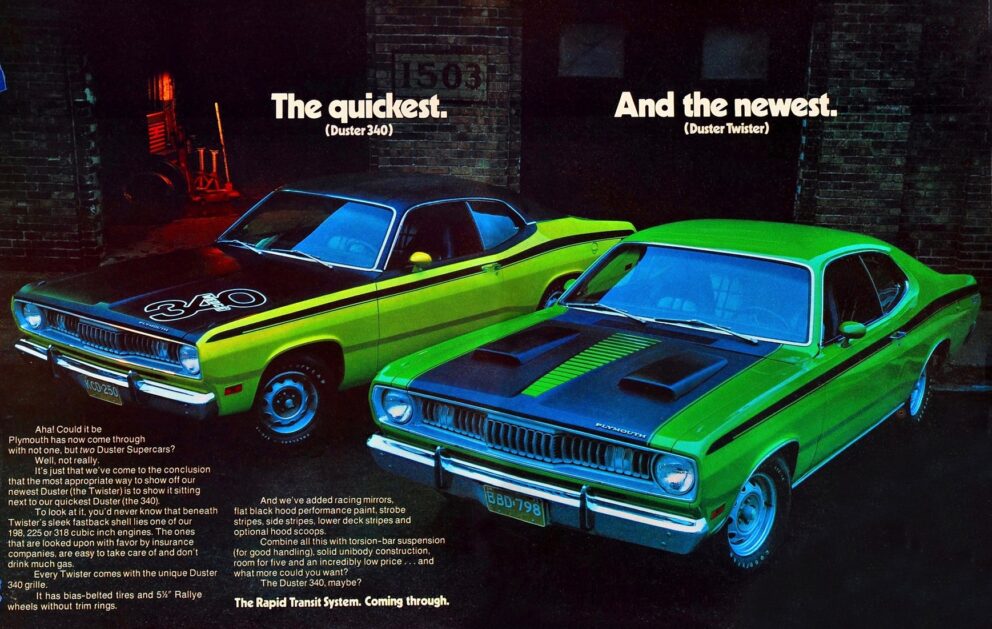
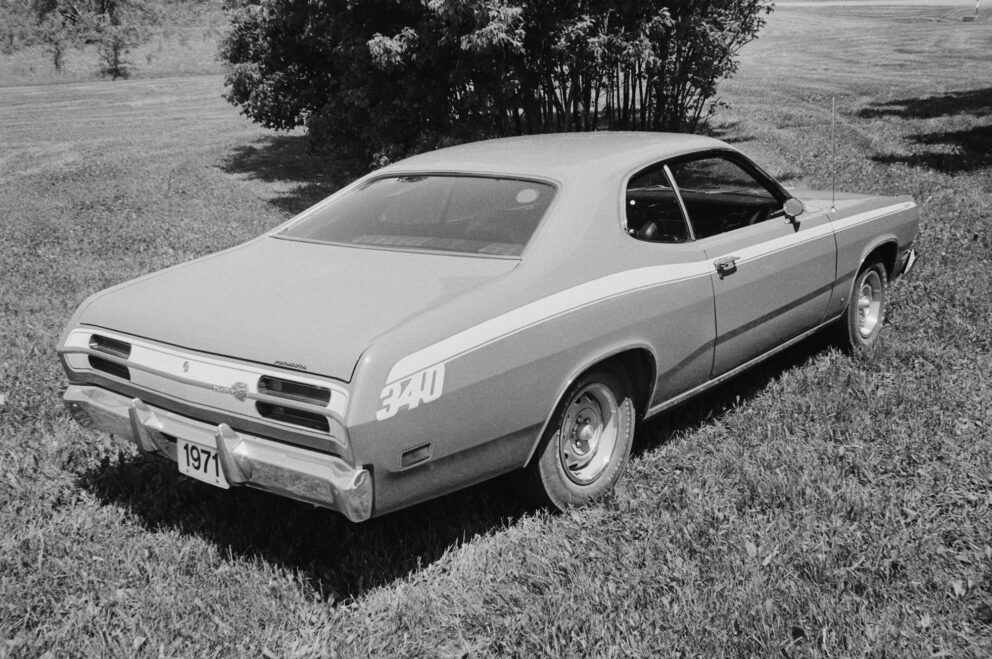
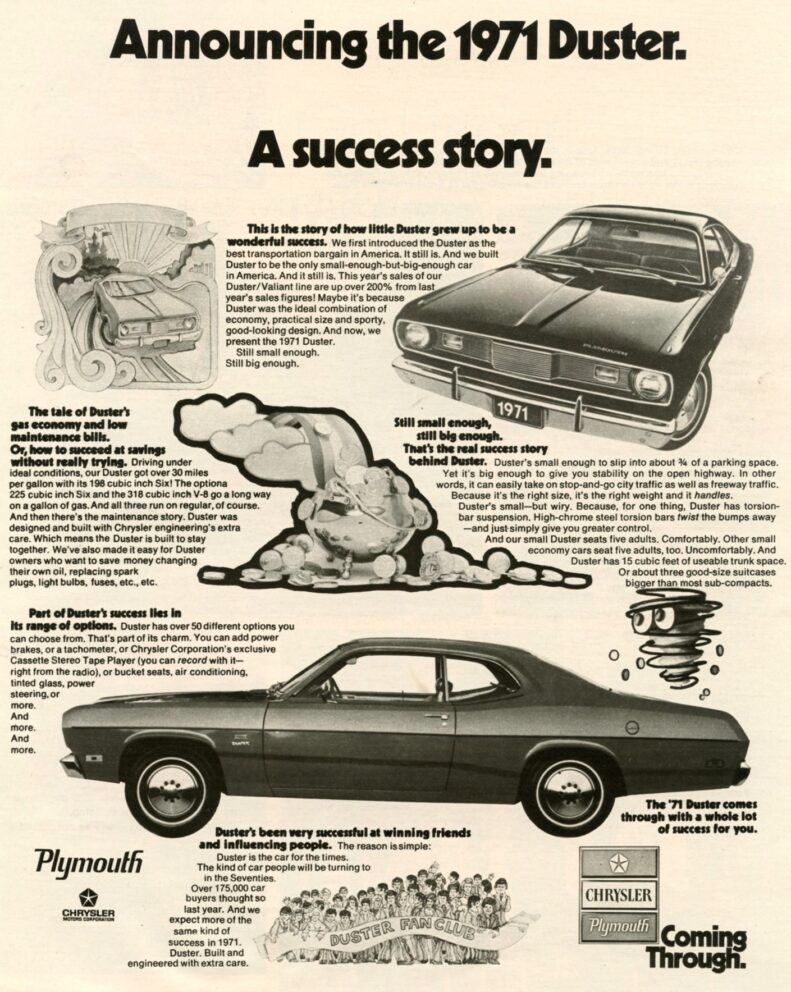
CHANGES FOR ’72
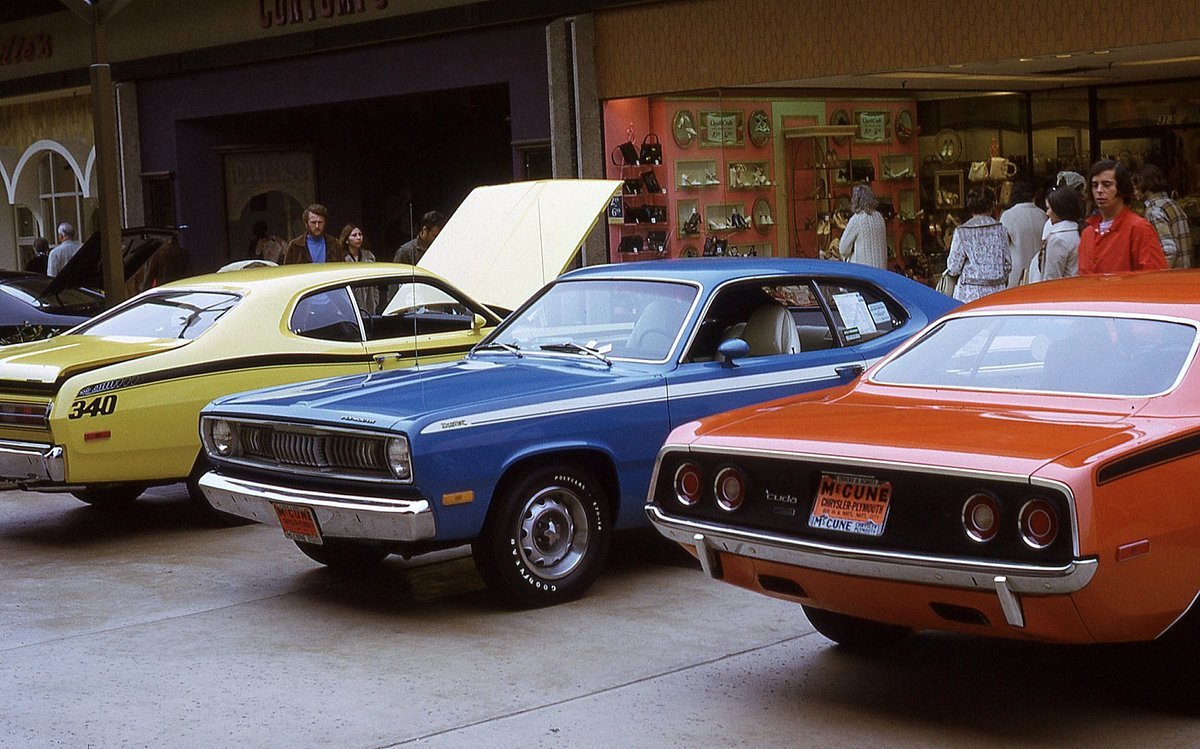
For 1972 came new wider taillights, engines now being rated from “gross” to “net”, which was to more realistically reflect the action horsepower as opposed to special dynomometer-run bench engines, not fitted with accessories. In order to deal with the increased restrictions on emissions, engine compression dropped in 1972, and in the case of the 340-cid engine, it was lowered to 8.5:1. Electronic ignition became standard equipment on all engines.
1972 also saw an additional model, the “Space Duster,” designed for cargo hauling, allowing for 6.5 feet of carpeted space. The expanded cargo area was made possible as the result of an opening access door fitted between the cabin and trunk cargo area, and the ability to now fold the rear seat forward and flat. 1973 was also the last year of the “340” Duster, which was still available with a Hurst shifter equipped 4-speed manual transmission, 3.55:1 rear gears with Sure-Grip, 14 x 5.5-inch Rallye wheels wrapped with E70-14 raised white-letter tires, bucket seats and dual side mirrors. Power-assist front discs were standard. The engine, a carry-over from ’72, with its 8.5:1 compression ratio and the smaller 1.88-inch intake valves, was rated at 240 net horsepower at 4,800 rpm. The “flashback” photo above is from a San Diego shopping center back in ’72, with brand-new Duster 340s displayed, along with a ‘Cuda. McCune Chrysler-Plymouth knew how to promote Mopar® Muscle to the masses!
1973 – LAST YEAR FOR 340
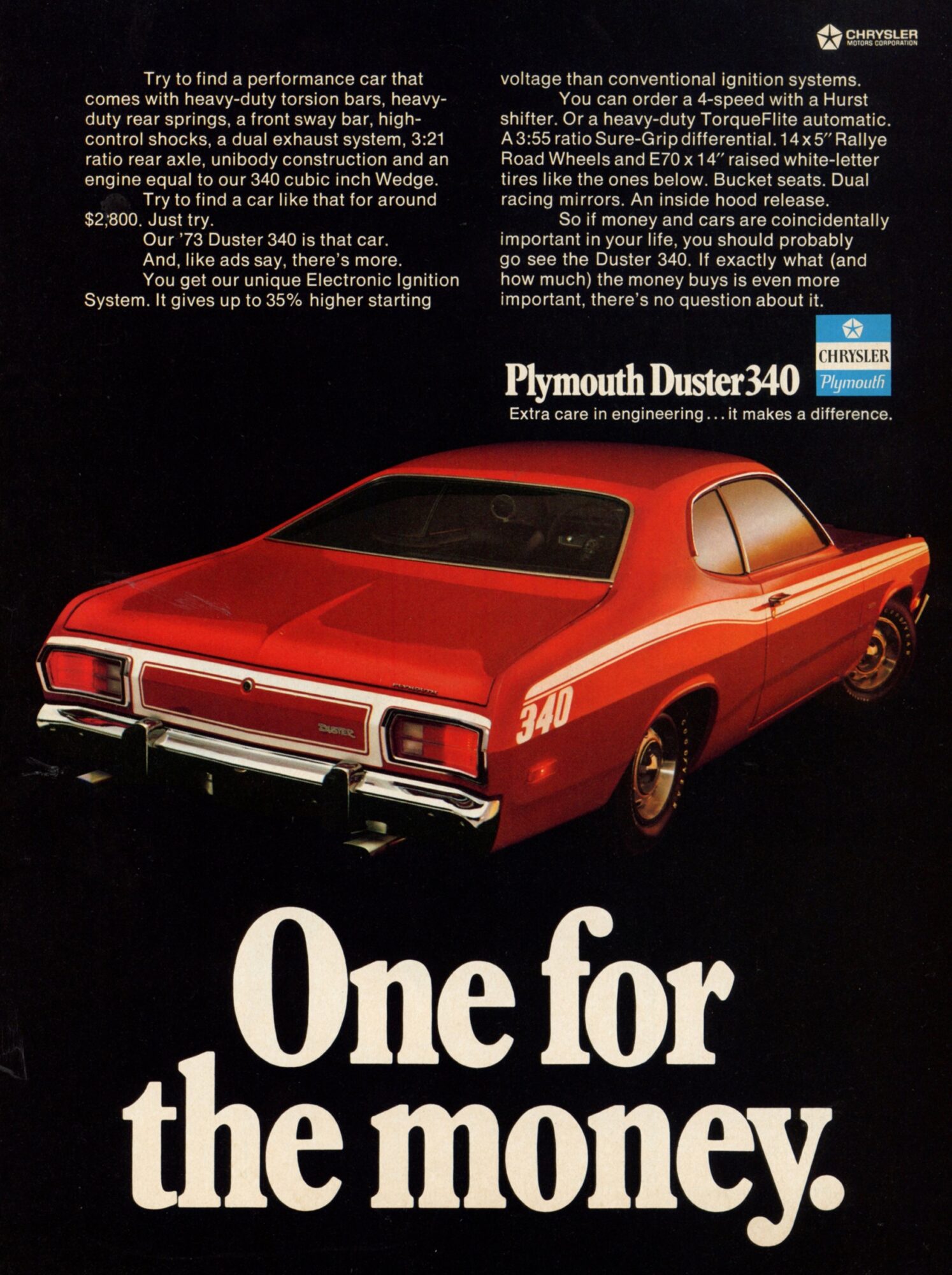
In this Duster 340 magazine ad for 1973, the copy mentions standard dual exhausts, heavy-duty suspension, plus the standard electronic ignition system. $2,800.00 was the main selling point, affordable performance!
Because of new bumper requirements from the government (5 mph impact-absorbing front, 2.5 mph impact-absorbing rear), 1973 also saw changes made to both the front and rear of the Duster, as the larger, more protective bumpers were fitted, as well as oversized rubber bumper guards. The hood and grille was facelifted providing a freshened appearance, with the headlights now housed in squarish-shaped bezels. Larger taillights were added on the rear.
1974
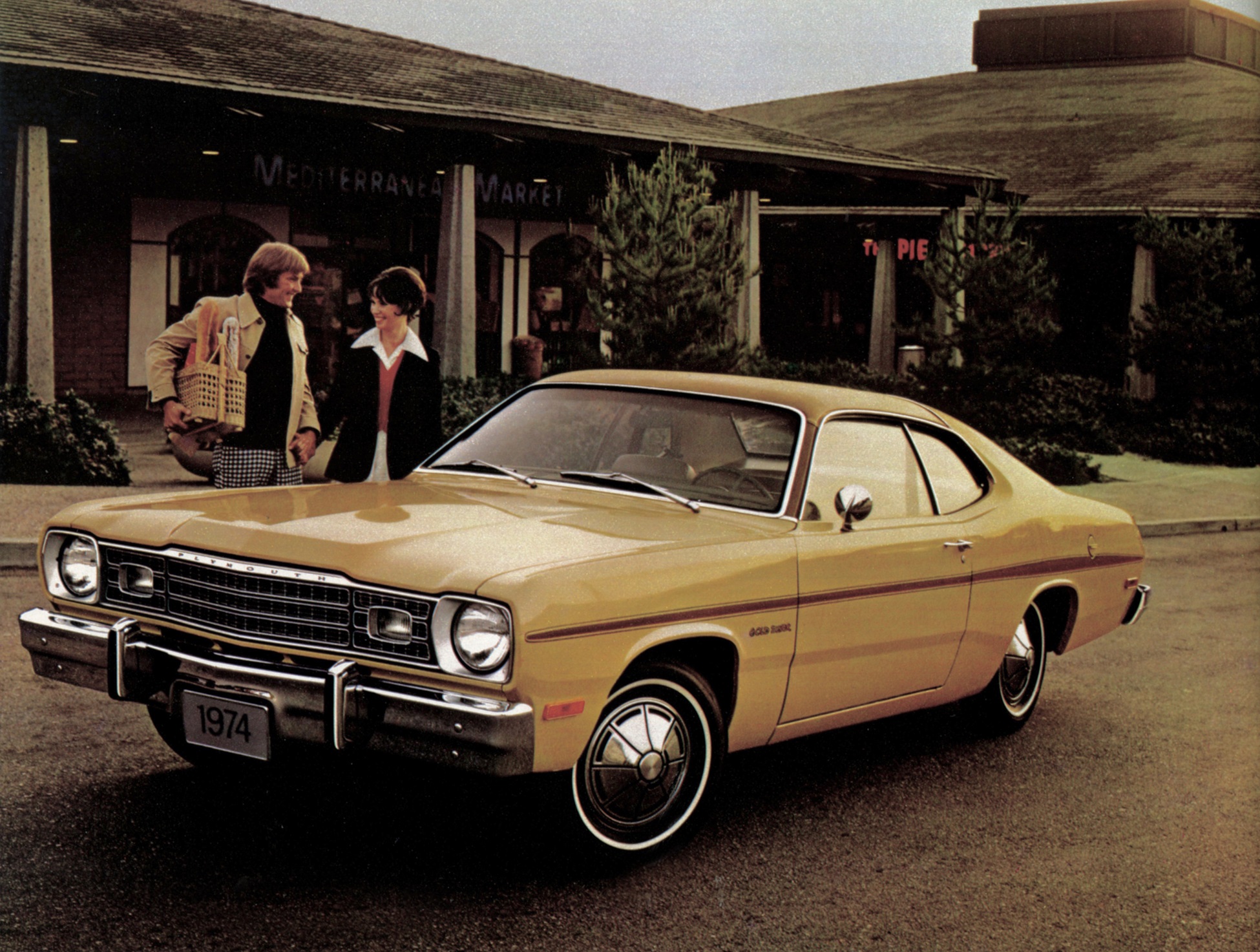
Duster 360 replaced the previous 340 for 1974, and the extra cubic inches represented a five horsepower increase, the engine now rated at 245 hp net. Here’s how the Plymouth marketing department described Duster’s new powerplant: “Our 360 high-performance engine should be especially appealing to any buffs in the crowd. It has many of the same time-tested components found in its famous predecessor – the 340. Its features include a four-barrel carburetor, shot-peened crankshaft, heavy-duty bearings, high-performance camshaft, special intake and exhaust valves (the stems of the exhaust valves are chrome plated for improved scuff resistance), high load valve springs with surge dampers, double roller timing chain, oil pan windage tray, slip drive fan and dual exhaust.”
But high-performance was really dying away by this place in time. Lower horsepower because of smog-related changes (lower compression) and stricter tailpipe emissions (less radical camshafts) killed it off. Plus, the cars became heavier with the larger bumpers, side door steel crash protectors and in addition, in the case of the Duster, added soundproofing. These changes caused the weight to raise to around 150 pounds per vehicle. There was still some small hope however, as customers could still order 4-speed manual transmissions, Hurst shifters, 3.91:1 gearing and Sure-Grip for those that still wanted to burn some rubber. Disc brake-equipped Dusters for 1974 now ran wheels based on the 5-on-4.5-inch bolt circle diameter, no longer using the smallish 5 on 4-inch wheels from previous A-body cars.
1975: END IS NEAR
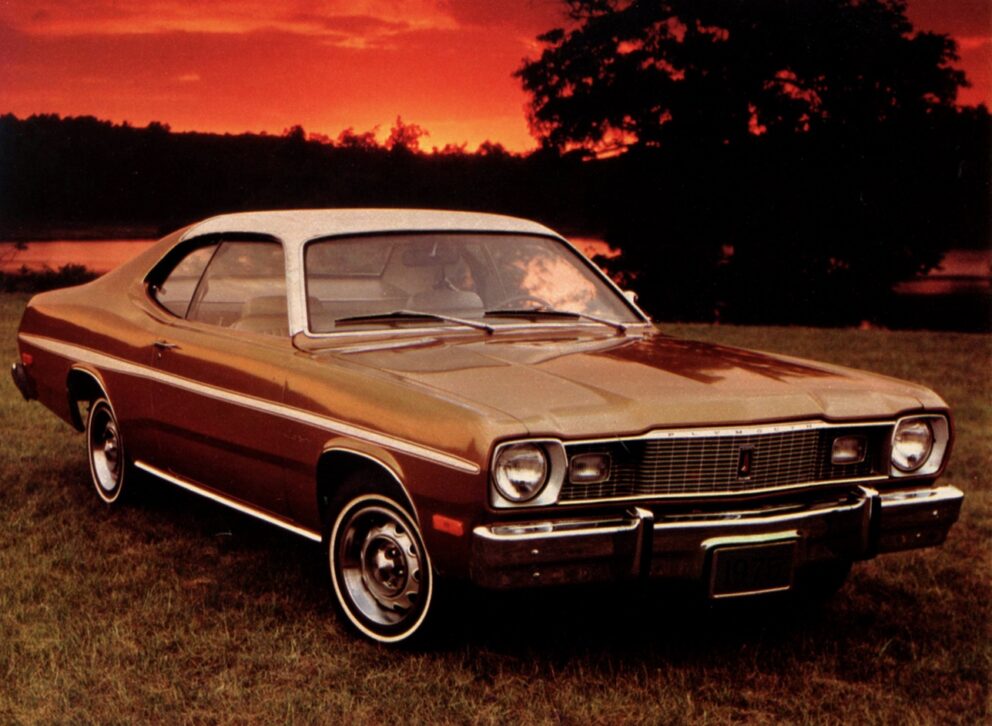
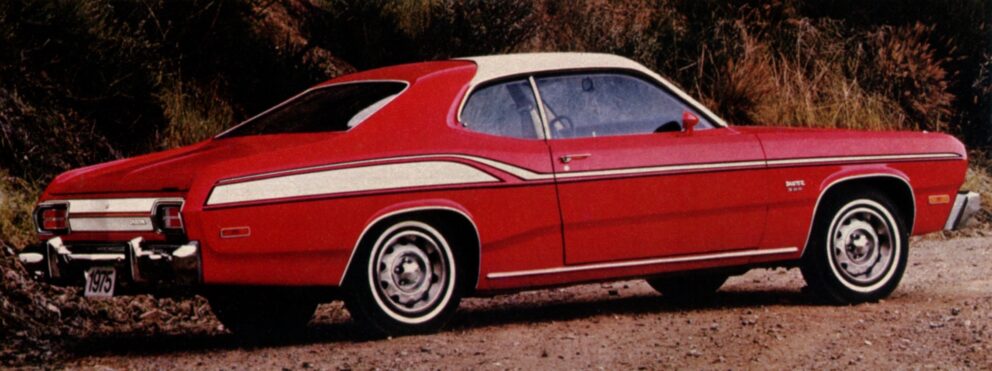
1975 Dusters were basically carried over from the previous model year, with minor revisions. This model year also saw the last of the Gold Duster package, with a new trim model, the Custom, introduced this year, with a distinctive interior. A base, stripped-down Duster with a 90-horsepower rating, 225-cid Slant Six engine had a shipping weight of 2,970 pounds. Overall sales figures dropped to 120,131, with 1,421 of them being the Duster 360 model, which was in its last year of existence.
For 1976, a $50.56 “Feather Duster” option (225-cid engine) was made available, which featured numerous weight-saving modifications (aluminum hood, bumper brackets, inner trunk, intake manifold and transmission housing on manual 4-speed A833 overdrive gearboxes), which resulted in a weight savings of 187 pounds (2,975 pound shipping weight). In addition, the special model was fitted with a 2.94:1 rear gear, recalibrated single-throat carburetor and re-curved distributor, plus low-restrictive exhaust system. The estimated fuel mileage was advertised at 36 mpg highway, 24 mpg city. 1976 also marked the introduction of an all-new model, the Volaŕe, which was sold alongside the Duster, which was in its final year of production. The 225-cid Slant Six and 318-cid powerplants continued, and while the Duster 360 package was no longer offered, the 360-cid engine itself could be ordered for an additional $392, automatic transmission only. The basic Duster and a “Silver Duster” (with unique side and deck striping) was also available. Overall sales of the Duster dropped to 34,581 units, and it was clear that it was time that the car would be discontinued, replaced by the new model.
Reflecting years later, one of the original Plymouth studio stylists, Fred Schimmel, had this summary of the Duster from the perspective of its sales history: “The Duster had proven very successful, just taking a very boxy-looking Valiant, the way that it was able to make a more flowing shape out of what had been a fairly boxy design, seemed to be well-liked. The public was buying Dusters quite well.” Considering the design work for the Duster was done in a six-week time period, and at the time it was most likely considered a “long-shot” as it was really just a warmed over Valiant in regards to its platform, after the seven-year model year run (and with very few changes done to it over the years), there’s no question the design was an overwhelming success.
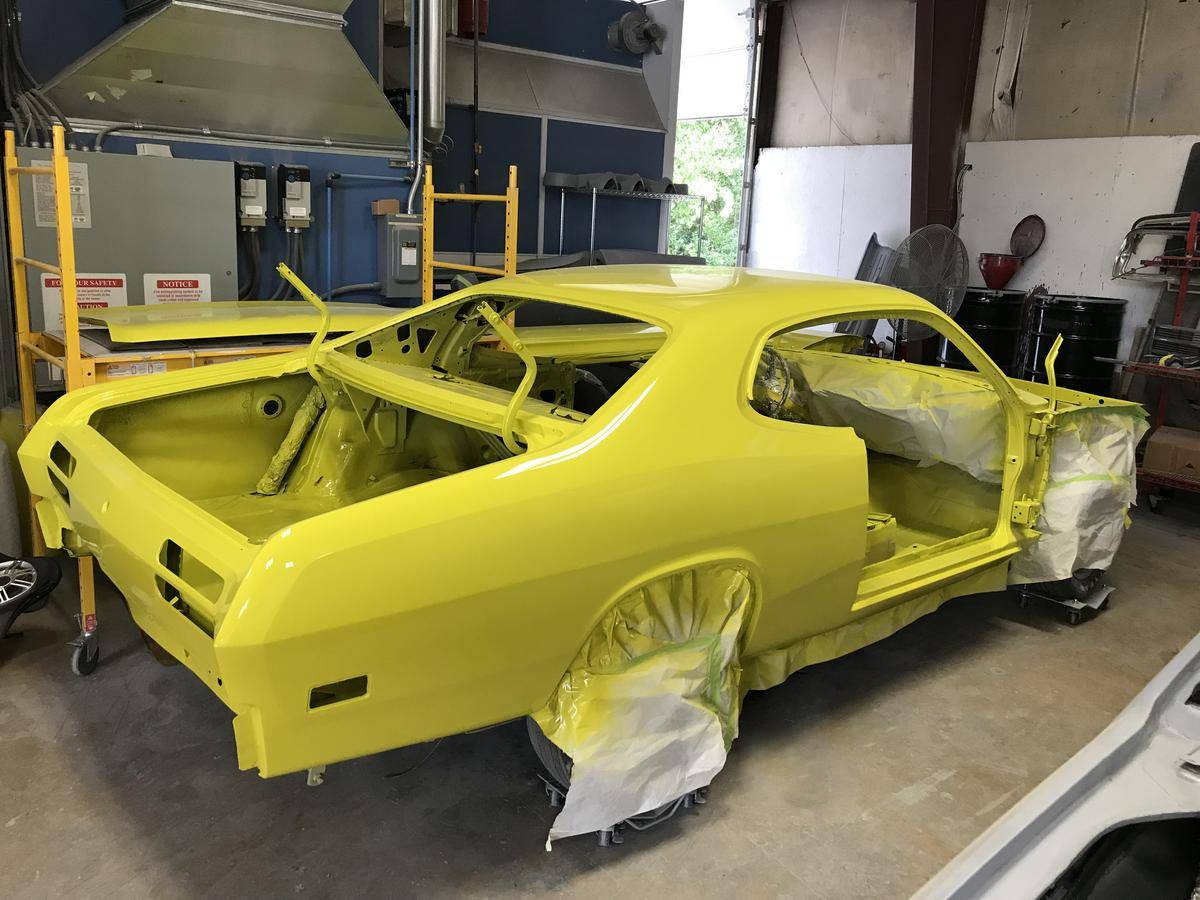
The unitized body structure of the Plymouth Duster was all-new from cowl back from the Valiant line, retaining the 108-inch wheelbase that the Valiant was based on, and it was done “on the cheap” then turned out to be a huge sales success. Carryover items also included the inner structures of the quarter panels and lower doors. The overall length of 188.4 inches also had to be retained.
THE NUMBERS
TOTAL 1970-1976 DUSTER SALES: 1,332,846
ADDITIONAL 1971-1976 DODGE DEMON/SPORT VARIANT SALES: 322,319
TOTAL OF BODY SHAPE PRODUCED: 1,655,165
A FAVORITE FOR PRO STOCK
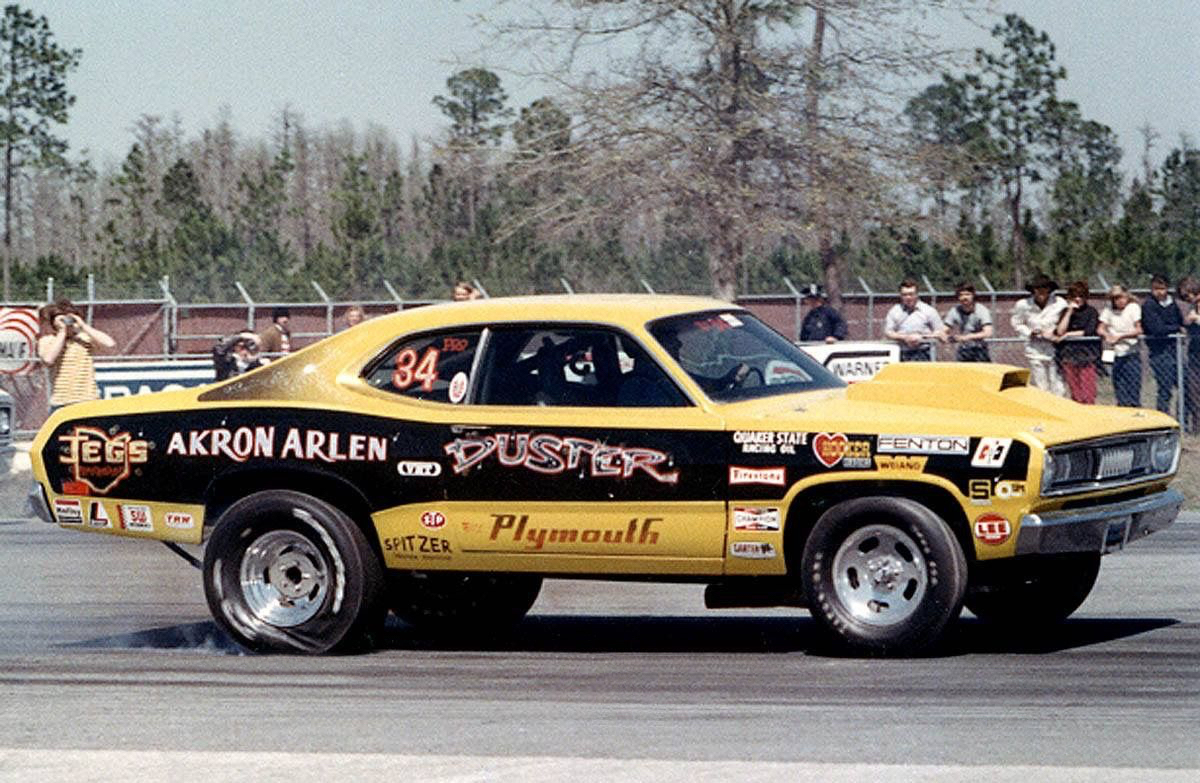
At the 1970 NHRA US Nationals, the winner of the new Pro Stock class was Herb McCandless in the Sox & Martin team car, running a 9.981 elapsed time at 138.03 mph. It was a great victory for Plymouth, as McCandless beat another Duster, Arlen Vanke, both 426 HEMI engine-powered, in the finals. Duster domination!
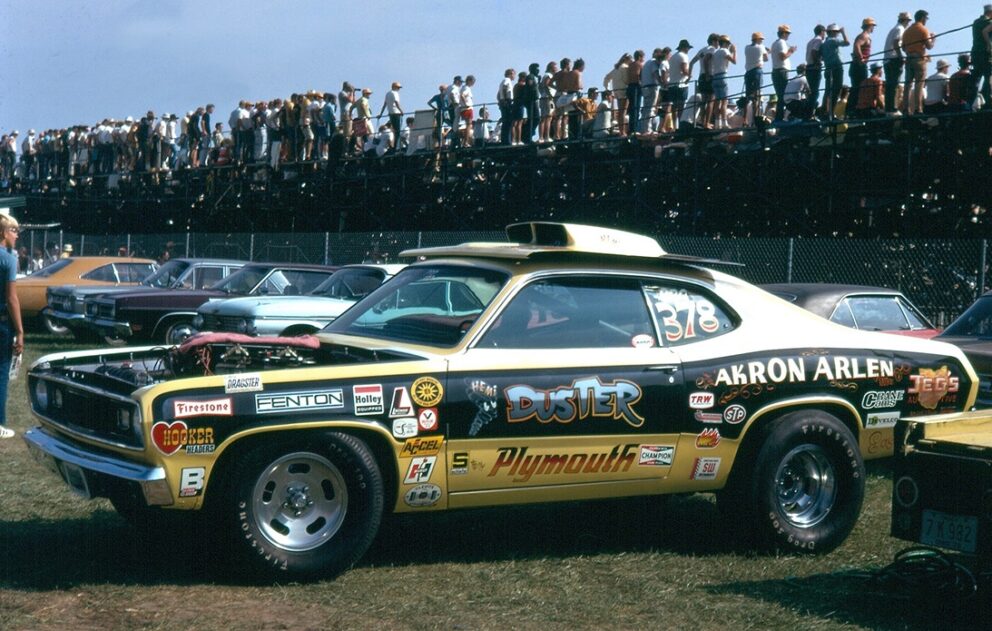
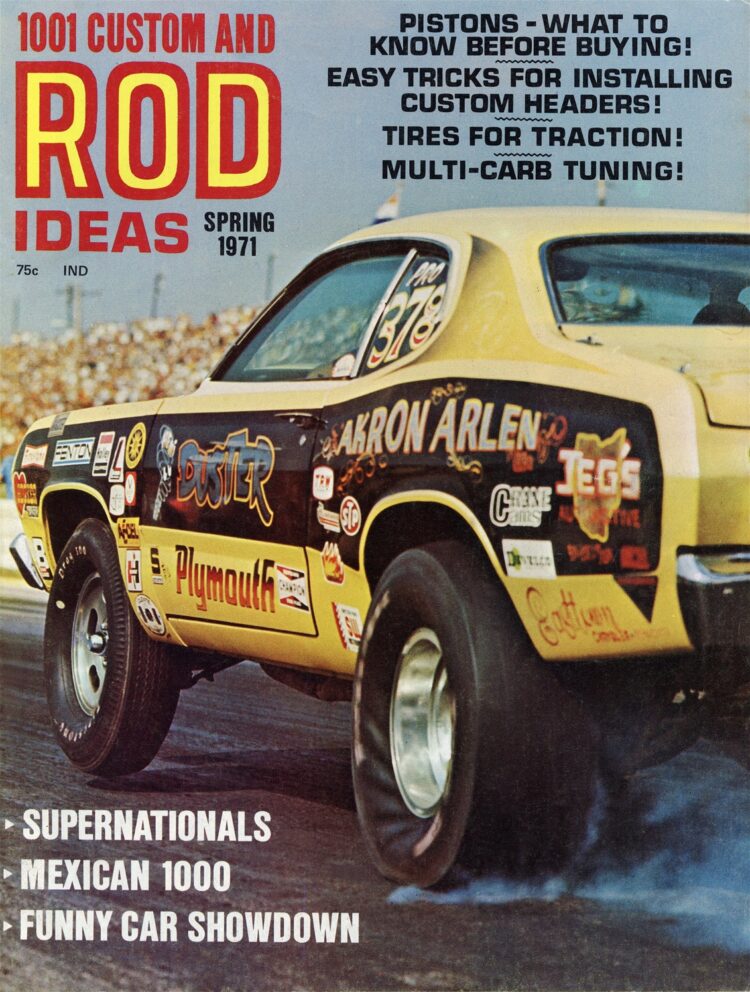
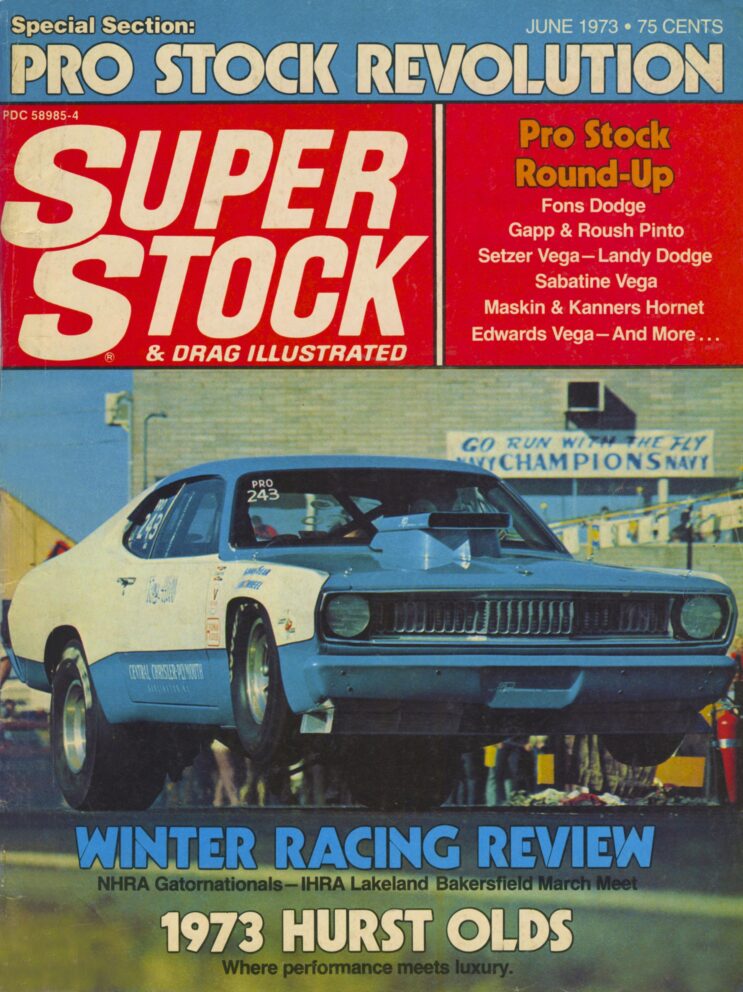
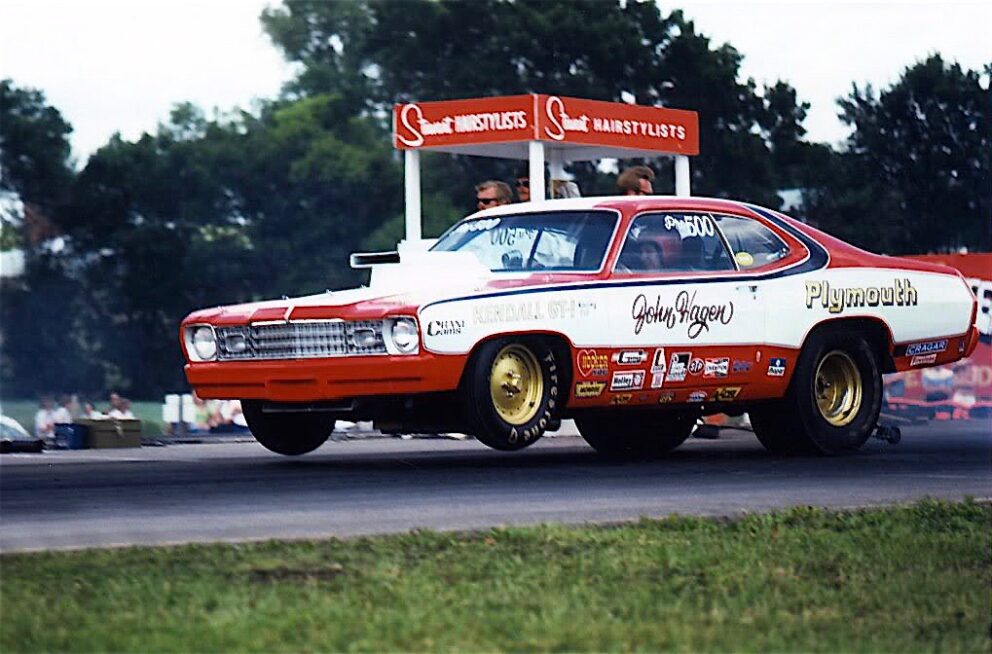
HOT ROD MAGAZINE PROJECT CAR
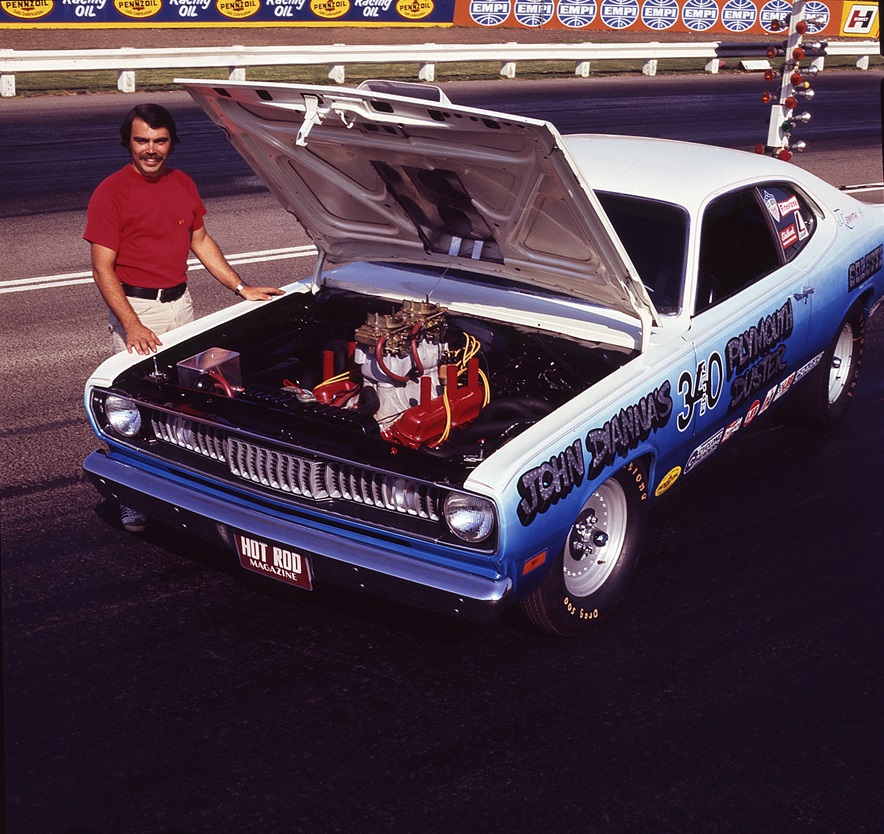
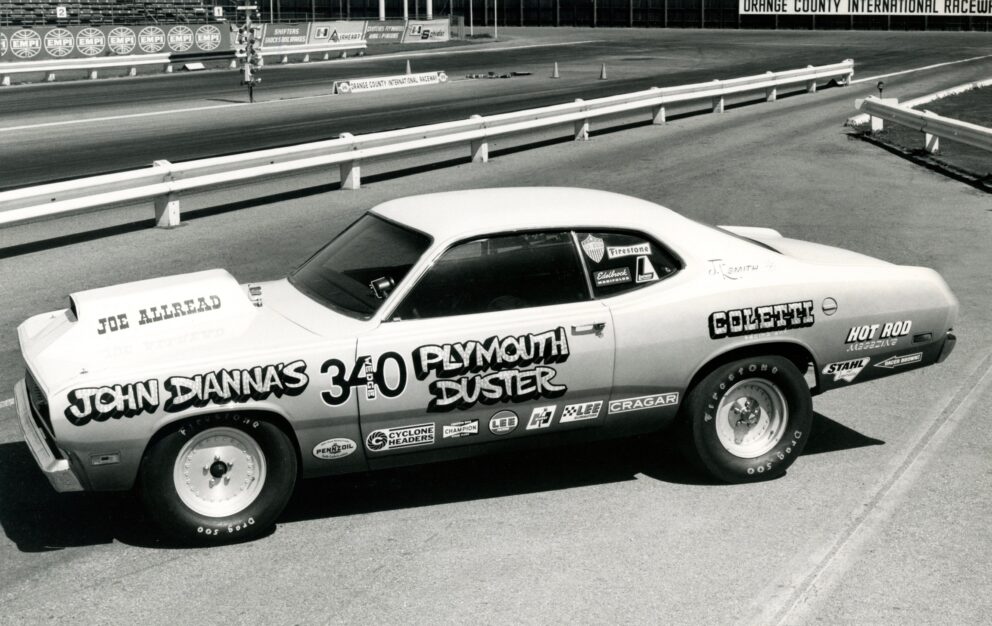
A writer for Hot Rod Magazine at the time, John Dianna built a ’72 Duster with a fully built 340-based race engine, de-stroked to 305 cubic inches to fit into NHRA’s E/Modified Production class. It was a project car that was featured inside the pages of the magazine circa 1972. This car served as an inspiration for many small-block Mopar enthusiasts.
STILL RUNNING STRONG
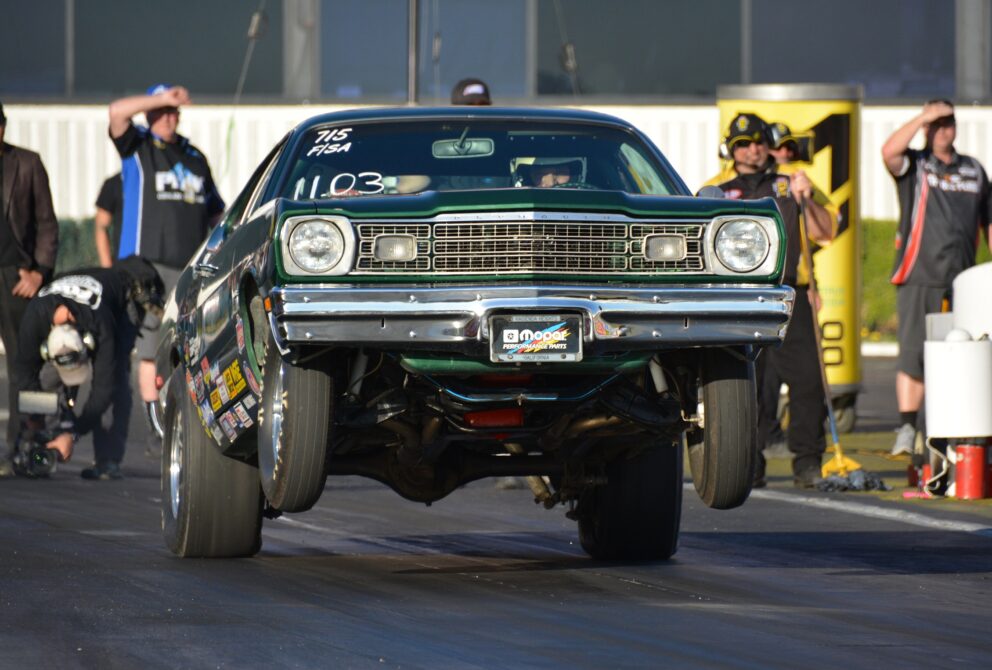
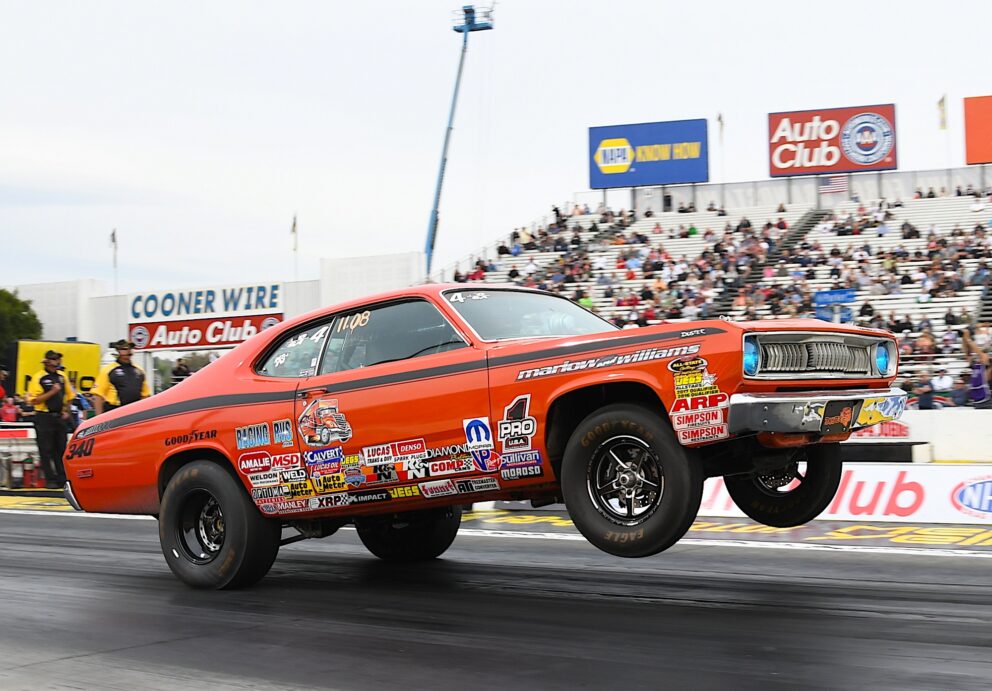
Dusters have been campaigned in NHRA Stock and Super Stock classes since they were introduced, and today are still seen on the national event and divisional circuits nationwide.
Author: James Maxwell
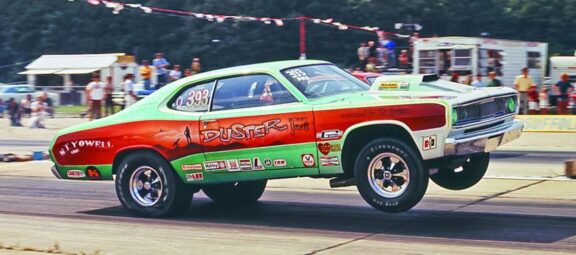
0 Comments